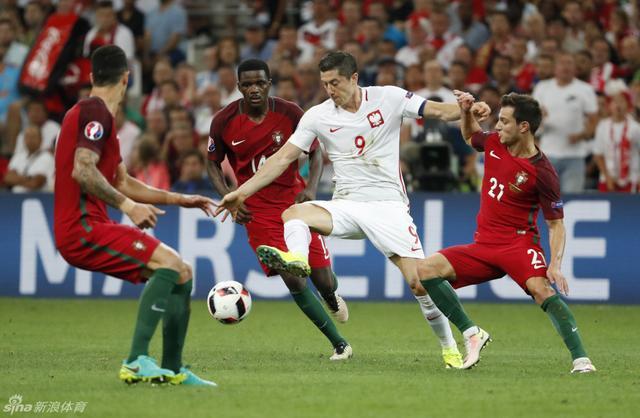The Versatility of Gym:Exploring the World of Indoor Sports Facilities
Introduction
The term "gym" is a ubiquitous part of our vocabulary, often associated with fitness and physical exercise. However, the word has a broader meaning and application in the context of indoor sports facilities. In this article, we will delve into the multifaceted nature of "gym" as it relates to indoor sports and recreational spaces, examining their importance, design, and the range of activities they accommodate.
The Origin and Evolution of the Word "Gym"
The word "gym" is short for "gymnasium," which has its roots in ancient Greece. The original gymnasium was a place for both physical education and intellectual development. It was a space where young men would train for athletic competitions and engage in philosophical discussions. Over time, the term has evolved to refer more specifically to places where people engage in physical exercise, particularly in a structured environment.
The Importance of Indoor Sports Facilities
1、All-Weather Accessibility: One of the primary benefits of indoor sports facilities is their ability to provide a space for physical activity regardless of the weather outside. This is particularly important in regions with extreme climates or inconsistent weather patterns, ensuring that people can maintain their fitness routines year-round.
2、Safety and Comfort: Indoor facilities offer a controlled environment that can be safer and more comfortable than outdoor spaces. They are free from the elements and can be designed to minimize the risk of injury, with proper flooring, lighting, and equipment.
3、Versatility: Indoor sports facilities can be designed to accommodate a wide range of sports and activities, from team sports like basketball and volleyball to individual pursuits like yoga and weightlifting. This versatility makes them a popular choice for communities looking to provide diverse recreational opportunities.
4、Community Building: Gyms and indoor sports facilities often serve as community hubs, bringing people together for shared activities and fostering a sense of belonging and camaraderie.

Designing Indoor Sports Facilities
Designing an effective indoor sports facility involves several key considerations:
1、Space Allocation: The size and layout of the facility should be tailored to the types of activities it will host. For example, a facility designed for basketball will need a large, open space with a high ceiling, while a facility for martial arts may require more partitioned areas for individual practice.
2、Acoustics and Lighting: Good acoustics are essential for sports facilities to minimize noise pollution and ensure clear communication during games and practices. Similarly, adequate lighting is crucial for visibility and safety, especially in facilities that may be used during evenings or in low-light conditions.
3、Flooring: The type of flooring used in a sports facility can have a significant impact on player safety and performance. Different sports may require different types of flooring, such as hardwood for basketball courts or sprung floors for gymnastics.
4、Climate Control: Indoor facilities must be designed with climate control systems to maintain a comfortable temperature and humidity level, which is essential for athlete performance and equipment longevity.
5、Accessibility: Facilities should be designed with accessibility in mind, ensuring that they are usable by people with disabilities. This includes ramps, elevators, and wide doorways, as well as accessible changing rooms and restrooms.
A Spectrum of Activities in Indoor Sports Facilities
1、Team Sports: Indoor facilities are ideal for team sports such as basketball, volleyball, and indoor soccer. These sports require a large, open space and can be played in a variety of configurations depending on the facility's size and design.
2、Individual Sports: Activities like tennis, badminton, and squash can also be accommodated in indoor facilities. These sports often require specialized courts and equipment, which can be provided in a dedicated indoor setting.
3、Fitness and Conditioning: Many indoor sports facilities include areas for fitness and conditioning, with equipment such as treadmills, elliptical machines, free weights, and resistance machines. These areas can also be used for group fitness classes like spinning, Zumba, or Pilates.
4、Martial Arts and Dance: Indoor facilities can also be designed to accommodate martial arts and dance classes. These activities require specific flooring and sometimes specialized equipment, such as mirrors and ballet bars.
5、Recreational Activities: Beyond sports and fitness, indoor facilities can host recreational activities like indoor rock climbing, trampoline parks, and even virtual reality gaming areas.
The Future of Indoor Sports Facilities
As technology advances, so too do the possibilities for indoor sports facilities. We can expect to see more integration of technology in these spaces, from smart flooring that can track athlete performance to virtual reality systems that can simulate various sports environments. Additionally, there is a growing emphasis on sustainability in facility design, with an increasing focus on energy-efficient lighting, heating, and cooling systems, as well as the use of eco-friendly materials.
Conclusion
The term "gym" has come a long way from its ancient Greek origins. Today, it represents a diverse range of indoor sports facilities that cater to a wide array of activities and needs. As communities continue to invest in these spaces, they play a crucial role in promoting health, fitness, and community engagement. By understanding the importance of these facilities, their design considerations, and the activities they can accommodate, we can better appreciate the role that "gym" plays in our modern lives.
体育资讯
MORE>- 搜索
- 最近发表
-
- NBA湖人vs猛龙128-111全场解析:詹姆斯戴维斯联手制胜,关键转折与战术深度剖析
- 梅西球衣退役了吗?探索足球传奇的球衣故事
- 掌握天气的英语表达,日常对话中的实用指南
- 揭秘四川省大乐透兑奖中心,中奖者的梦幻之地
- 选号码的艺术,掌握技巧,让数字为你带来好运
- 足球术语的英文表达,从球场到术语的全面指南
- 掌上财经助手,如何轻松下载手机新浪财经APP
- 探索新浪财经手机版首页,您的移动金融信息中心
- 探索露天体育场的英文魅力,从草坪到看台的全球语言
- 足球盛宴,2026世界杯预选赛18强赛程全解析
- 探索北京鸟巢体育场,奥运遗产与现代建筑的融合
- 新浪财经手机版,随时随地掌握财经脉搏
- 探索英语中的尺码表达,37码鞋的地道说法
- 如何用英语表达累,实用表达与生活场景
- 掌上排球激情,新浪体育手机版女排,随时随地的体育盛宴
- 解锁体育场的英语密码,从日常对话到国际赛事
- 头晕目眩,英语表达的艺术
- 探索四川福彩网开奖,揭秘背后的机制与幸运时刻
- 梦想成真,四川省双色球开奖结果的奥秘与魅力
- 足球的绿洲,运动场地足球场的魅力与影响
- 标签列表
-
- 2024年欧洲杯预选赛 (15)
- 2024欧洲杯比赛时间 (16)
- 2024欧洲杯百度百科 (21)
- 2024欧洲杯杯 (11)
- 为啥欧洲杯 (9)
- 2024欧洲杯完整赛程表 (9)
- 欧洲杯在哪个国家举行2024 (10)
- 欧洲杯一共多少场 (9)
- 欧洲杯参赛球队有几支 (14)
- 欧洲杯哪个国家厉害 (12)
- 欧洲杯多少支球队参加 (9)
- 欧洲杯共多少场比赛 (11)
- 2024欧洲杯主办城市 (11)
- 欧洲杯哪个队最有可能进决赛 (12)
- 2024年欧洲杯主办国 (11)
- 欧洲杯一场多少人 (12)
- 哪个地方可以看欧洲杯 (10)
- 在哪里可以看欧洲杯预选赛 (23)
- 欧洲杯一场比赛时间多长 (9)
- 欧洲杯一共多少球队 (14)
- 欧洲杯为什么没有中国 (9)
- 欧洲杯有多少只球队参加 (14)
- 直播培训学校 (10)
- 直播吧 (16)
- 直播吧官网 (11)


